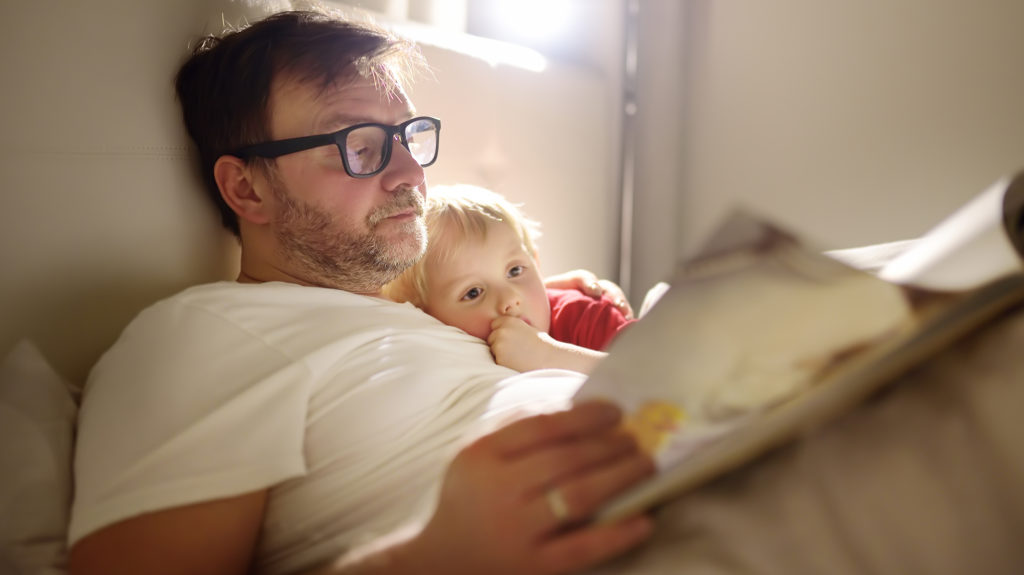After the pandemic hit in 2020, many sleep researchers found there was an increasing number of Americans with sleep problems. One researcher even gave it a name: coronasomnia.
While many things can keep us up at night or prevent us from going to sleep in the first place, it’s important to know that sleep is a behavior that can be taught. As an ABA therapy provider, The Behavior Exchange helps children with autism and many other developmental concerns learn skills that promote a good night’s sleep.
Adults can learn sleep skills, too! The first step is to identify the problem. There are various sleep problems that affect children and adults alike, ranging from having difficulty falling asleep to waking up in the middle of night or very early. Once the problem has been identified, it can be addressed by teaching an appropriate alternative behavior – good sleep.
Set the Environment During the Day
- Throughout the day, ensure you and your child are getting regular exercise. Go for a family walk together before dinner. Visit the playground, kick around a soccer ball, or have fun doing your favorite sports activities.
- Next, make sure your family is avoiding caffeine after 4:00 p.m. Don’t forget caffeine can be found in more places than just coffee and energy drinks. Chocolate and tea contain caffeine, too.
- For children over 5 years old and adults, it’s important to avoid naps.
- Finally, avoid doing activities in bed during the day. You want the bed to signal sleep and rest. Engaging in other activities, like watching TV or playing, breaks the connection that your bed signals time to sleep.
Actions to Take at Night
Just before bed you want to establish a nightly routine. This routine should move from active behaviors to more passive behaviors to signal behavioral quietude. You know how, when you’re making your way to the bathroom, you have to go to the bathroom more and more and more? The toilet signals that you can empty your bladder. In this same way, you want going through your nightly routine to signal sleep, making you more and more tired as you complete each step. Here are some nighttime considerations:
- Lighting – If you can, adjust the lighting in your home to get dimmer throughout the evening. Our bodies are very in tune with light cycles. If it’s very bright, the light can affect everyone’s sleep.
- Temperature – A cooler environment helps to promote sleep. Keep the thermostat between the upper 60s and lower 70s throughout the night. A consistent temperature throughout the night is important as well, so that you or your child doesn’t wake up in the middle of the night that is hotter or colder.
- Screen Time – Avoid screen time for your family within the last hour or so before going to sleep. Screens are very stimulating to the brain, and the blue lights can mess with your sleep patterns.
- Establish a Routine – In the last 15-30 minutes before going to bed, engage in the same routine set of behaviors every night that move from active to passive. The routine may start with a not-to-warm bath, lotion, jammies, brushing teeth, reading books in the bedroom, then going to bed. Find a routine that works for your family and if you and your family travel a lot, try to do a routine that can be easily transferable to different environments. Moving the routine to the bedroom rather than a common area can also help, so that your children are not leaving a fun environment to go to their room where they’re alone or more isolated.
- Ensure Consistency and Appropriateness – Do the same routine every night. Identify the key items that your child depends on to fall asleep and ensure they’re available every night and throughout the night. Do they need socks on? Do they need a special toy? Do they need an iPad or even you? Some sleep dependencies are healthy and appropriate, while others are unrealistic. If a child needs a parent to fall asleep every night and that parent isn’t right where they were when the child fell asleep, it can cause big issues throughout the night. Work on replacing these inappropriate dependencies with healthy ones, and ensure they’re consistently available.
We hope you found these tips for a better night sleep helpful. Please let us know if were able to successfully put them into practice in your home. If you need further help with any sleep issues affecting your child, the ABA therapy experts at The Behavior Exchange are ready to lend a hand. Our hives in Texas and Colorado are safely open and providing life-changing therapy for children of all abilities. Early intervention is key, so contact us today!
This blog entry was written by Angela Hergenrether, BCBA.

